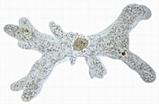
(amoeba) |
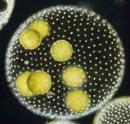
(Volvox) |
EUKARYOTA
Condensed greatly from Tree of Life 2011 & Pawlowski 2015
|
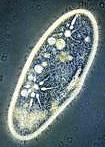
(paramecium) |
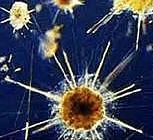
(radiolarian) |
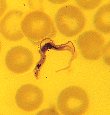
(trypanosome) |

(amoeba) |

(Volvox) |
EUKARYOTA
Condensed greatly from Tree of Life 2011 & Pawlowski 2015
|

(paramecium) |

(radiolarian) |

(trypanosome) |
==== Chlorophyta (unicell. green algae; Chlamydamonas, Volvox); phytoflagellate
==|
=Ar*=| =M== Embryophytes (land plants)
| |
=Cp=| ==M=== Rhodophyta (red algae)
| |
| =========== Glaucophyta (contain symbiotic cyanobacteria)
|
| ====== "radiolaria" (P/B phyla Acantharia; Heliozoa); actinopod sarcodine
| ==Rh*=|
==| | ====== Foraminifera (P/B phylum Granuloreticulosa); rhizopod sarcodine
| | |
| =C=| ==N== Ciliophora (Paramecium, Stentor, Spirostoma); the ciliates
| | |
| | =Al*=| Cp= Dinoflagellata; phytoflagellate
| | | ==|
==| ==| === Apicomplexa (Plasmodium); sporozoan
| | |
| | =St*,M,Cp= STRAMENOPILES (includes diatoms, brown algae, & other taxa)
| |
| | ===D========= Diplomonads (P/B phylum Metamonadida, zooflagellate, Giardia)
| | |
1<| =Ex*| ===Cp=== Euglenida (Euglena); phytoflagellate
| ==Eu=|
| ======== Kinetoplastida (Trypanosoma); zooflagellate
|
| =Am*=========== AMOEBOZOA (Amoeba, slime molds)
| |
====| ===M====== Fungi (mushrooms, molds, yeast, etc.)
| |
=Op*=| ==== Choanoflagellata; zooflagellate
=DiCh=|
=====B,G,M=================================TO METAZOA===>
TRAITS SUPPORTING EACH CLADE AND HIGHER TAXON GROUPS (those marked with *):
|
1= Eukaryotes: mitosis, membrane-bound organelles including: nucleus, rough endoplasmic reticulum, golgi apparatus?, lysosomes? mitochodria? Am*= AMOEBOZOA: restricted to the amoebas with lobopodia Al*= ALVEOLATES: many adjacent sacs or alveoli underlie cell surface; tubular mitochondrial cristae Ar*= ARCHAEPLASTIDA: share common plastid B= blastula C= Chromalveolata (share red-algal plastid) Ch= choanocyte (monociliated cells with ring of microvilli around flagellum, distinct flagellar vane) Cp= chloroplast D= ancient retrotransposon (Burke et al. 2002 Mol. Biol. Evol. 19:619); loss of mitochondrion? Di= diplosome (microtubular flagellar root) Ex*= EXCAVATA: most possess a conspicuous 'excavated' ventral feeding groove Eu= Euglenozoa: 1 or 2 anterior flagella, discoid mitochondrial christae G= Type IV collagen M= multicellularity N= micro- and macro-nucleus; infraciliary system fibril network that coordinates cilia Op*= OPISTHOKONTA: posterior flagellum on motile cells (a robust clade; see Torruella, G. et al. 2015) Rh*= RHIZARIA: share many molecular characters St*= STRAMENOPILES, unique 3-part mastigonemes in flagella |